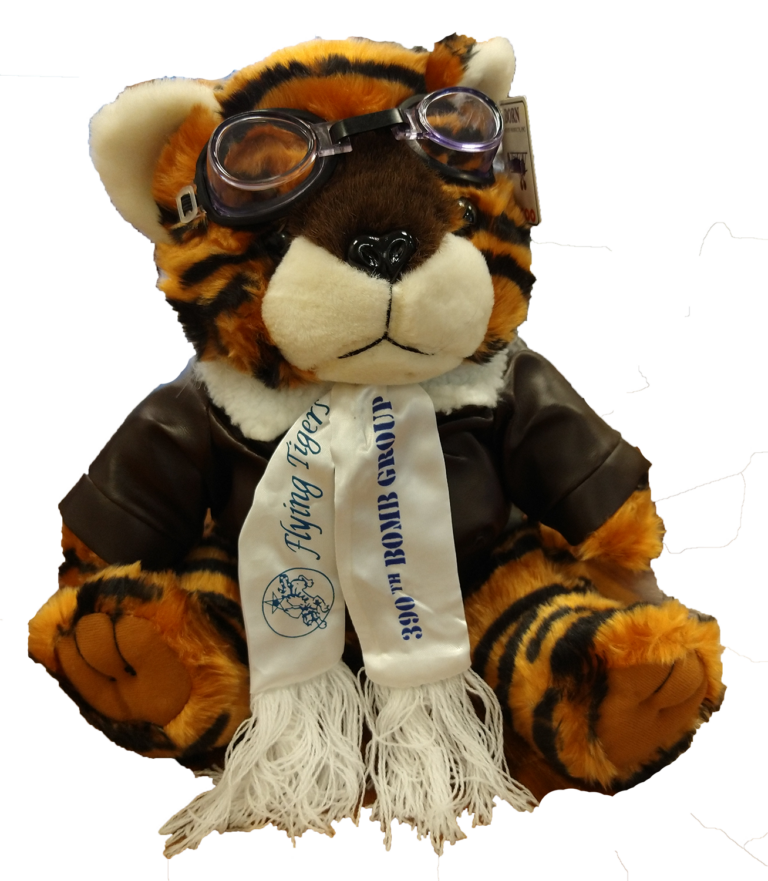This 12 inch tall stuffed tiger wears a flight jacket, goggles and flying scarf emblazoned with the “390th Bomb Group”. The perfect gift!
Operation Chowhound
Holland was invaded by Nazi Germany in late 1940, beginning a five-year-long occupation. By 1945, the Germans were retreating slowly but scavenging precious resources, depriving the Dutch citizens of food and destroying their supply lines.
The then-exiled Queen Wilhelmina, who was in London at the time, made a desperate plea to Allied forces to provide aid to the starving citizens of Holland. Such a mission would be trickier than expected because, despite the fact that German defeat was inevitable, Holland was still occupied. The Allies negotiated a temporary verbal truce and set about air-dropping rations.
The B-17s were demilitarized to decrease their starting weight, allowing a larger volume of food to be carried. Working with the British Royal Air Force’s “Operation Manna,” the Americans flew six missions the first week of May, using windmills and large white Xs, made from bedsheets, as targets for the drops.
The Dutch people remain forever grateful for this risky display of generosity. There are various memorials throughout the country and citizens spend years on a waitlist to have the opportunity to care for the graves of Allied soldiers in the Netherlands American Cemetery.
Exhibit Highlights
This exhibit has been part of the museum even before the major renovation in 2013. The Operation Chowhound missions meant the world to the men of the 390th Bombardment Group who had flown nearly all of their missions with the goal of enemy destruction.
A MAJOR RISK
Despite having permission from the on site German military to complete these humanitarian missions, the Allies took a big risk. No official surrender had been made or treaties signed. In fact, they were basically told, “You can do this but Berlin can’t know.” Given that the Allied planes were loaded with food and had no defenses, German planes could have easily attacked and destroyed them. Still, all the men involved would say it was a risk worth taking.
MAGIC NUMBERS = 5 - 6 - 777 - 34,532
5 cities - The Hague, Rotterdam, Amsterdam, Utrecht, and Volgenzang - benefited from 6 missions where 777 tons of food were dropped in 34,532 containers.
ALL HANDS ON DECK
Even non-airmen joined the missions as passengers so they, too, could see the positive work of the Allies in action.


